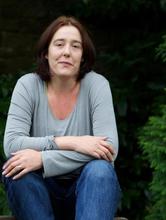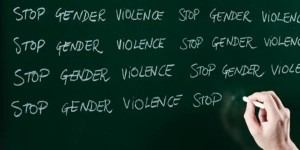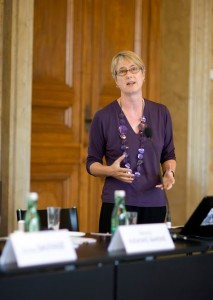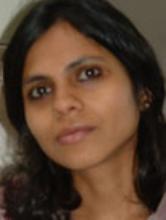 Dr Emma Williamson, Senior Research Fellow in The Centre for Gender and Violence Research, School for Policy Studies, discusses how the recent storyline in The Archers highlights the often silent issue of coercive control and its effect on victims/survivors.
Dr Emma Williamson, Senior Research Fellow in The Centre for Gender and Violence Research, School for Policy Studies, discusses how the recent storyline in The Archers highlights the often silent issue of coercive control and its effect on victims/survivors.
I have to admit that I don’t normally listen to The Archers. And people don’t normally talk to me about the story lines. That all changed when the long running series began a story over 18 months ago which looked at the issue of domestic violence and coercive control. One of the most difficult things that victims/survivors of abuse tell us, and have consistently told us since the first women’s refuges in the 1970’s, is that it is the non-physical abuse they experience which is the most difficult to deal with [Williamson, 2000]. The bruises and other injuries victims suffer from physical abuse are visible. They are evidence to other people but also to oneself. There it is in black and blue. What is more difficult to prove and believe, is that someone who purports to love and care for you would bully, undermine, and manipulate you. The women I spoke too after the fact would either say, ‘how could someone treat me like that?’ or more often than not, ‘how could I let someone treat me like that?’ – still blaming themselves.
As the Archers storyline shows, this type of abuse is characteristic of a pattern of ‘low level’ abusive behaviours rather than the explosive incident people tend to think about when they consider ‘a domestic’. It involves small everyday things which result in people staying away, isolating victims from their family, friends, and networks of support. Recent research from Bristol has documented the massive impact of such abuse on friends and family [Gregory et al, 2016], as well as the evidence we know about the impact on victims [Mullender et al, 2005], their children [Mullender et al, 2002], and perpetrators themselves [Hester et al, 2015]. Doctors, the police, courts, social services, all tend to think of interventions in terms of those single incidents which means that the on-going manipulation of victims goes unnoticed.
Some call this type of abuse coercive control [Evan Stark, 2008], others intimate terrorism [Johnson, 1995], but for many victims it is this type of abuse which has the greatest impact on their liberty and personhood.
Work conducted at the University of Bristol has shown the long term health and emotional impacts of this type of abuse on victims [Abrahams, 2010; Williamson, 2010]. Indeed researchers at Bristol have been at the forefront of developing adequate measures which enable us to include this type of insidious and often invisible abuse within our survey’s and analysis of DV within various population groups [Hester et al, 2011].
In 2016, following work with Evan Stark, oft time visiting professor at the Centre for Gender and Violence Research, the British Government introduced a new criminal law on domestic violence which explicitly identified coercive control as a pattern of abusive behaviours. It is this concept which forms the basis of the current Archers storyline and which the script writers have slowly and meticulously explored.
Working with national charities, including Women’s Aid[i], the script writers have demonstrated the impact of this type of on-going abuse and by taking their time, shown how such a manipulative partner operates. 18 months in it is harder for the listener to simply blame the victim and ask why she doesn’t leave. Hopefully the audience can begin to understand how the gradual nature of the abuse undermines someone’s sense of self, their personhood, and ultimately their liberty and/or human rights.
I don’t know what the outcome of the current storyline will be. I hope that there is enough evidence so that Rob gets his commuppence, yet we know from sad reality that for many in this situation escaping the abuse is easier said than done. Even when victims physically leave an abusive relationship they are not ‘free’. Many women are blamed when they retaliate, or killed during the process of leaving[ii] , when the abusers control is being challenged the most. For those with children their contact with the abuser might be on-going through child contact proceedings[iii] [Hester, 2011].
What we do hope however, is that whatever happens with the current story, that the audience leaves with a greater understanding of the ways in which domestic violence operates and how it impacts on those involved. We hope listeners will understand how hard perpetrators make it to leave.
If anyone has been affected by the storyline, and wants to talk to someone in confidence, then the National Domestic Violence helpline are an excellent resource.
24 hours, 7 days a week. 0808 2000 247.
References
Abrahams, H. (2010) Rebuilding lives after domestic violence: long term outcomes. London: Jessica Kingsley
Gregory, A., Williamson, E., & Feder, G. (2016) The impact on informal supporters of domestic violence survivors: A systematic literature review. Journal, Violence and Victims. 3 Mar 2016.
Hester, M, Ferrari, G, Jones, S, Williamson, E, Peters, T, Bacchus, L & Feder, G (2015) Occurrence and impact of negative behaviour, including domestic violence and abuse, in men attending UK primary care health clinics: a cross-sectional survey. BMJ Open, vol 5: pp. 1-10.
Hester, M. (2011). The three planet model – towards an understanding of contradictions in approaches to women and children’s safety in contexts of domestic violence. British Journal of Social Work, 41, 837 – 853.
Hester, M., Fahmy, E., & Donovan, C. (2011). Feminist Epistemology and the Politics of Method: Surveying Same Sex Domestic Violence. In C. Hughes, & R. Cohen (Eds.), Feminism Counts: Quantitative Methods and Researching Gender. London: Routledge.
Johnson, M.P. (1995) Patriarchal terrorism and common couple violence: Two forms of violence against women. Journal of Marriage and the Family 57 (2):283-294.
Mullender, A., & Hague, G. M. (2005). Giving a Voice to Women Survivors of Domestic Violence through Recognition as a Service User Group. British Journal of Social Work, 35 (8), 1321 – 1341.
Mullender, A., Hague, G. M., Imam, I., Kelly, L., Malos, E. M., & Regan, L. (2002). Children’s Perspectives on Domestic Violence. SAGE Publications Ltd.
Stark, Evan (2008) Coercive Control. Oxford Uni Press; Oxford.
Williamson, E. (2010) Living in the world of the domestic violence perpetrator: Negotiating the unreality of coercive control, Violence Against Women, 16, pp.1412-1423.
Williamson.E. (2000) Domestic Violence and Health: The response of the medical profession, Bristol: Policy Press.
[i] http://www.mumsnet.com/Talk/guest_posts/2607008-Guest-post-Domestic-abuse-I-am-a-real-life-Helen-Warning-upsetting-content
[ii] https://kareningalasmith.com/counting-dead-women/2015-2/
[iii] https://www.womensaid.org.uk/launch-of-nineteen-child-homicides-report-child-first-campaign/







